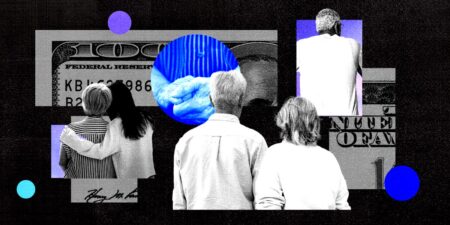The year 2024 could be a tipping point for credit rating agency (CRA) influence after overplayed the sovereign credit rating card.
Since mid-2023, nearly 20% of the world’s governments have experienced credit rating downgrades. Of these, 80% are concentrated in the Global South: 20% (7) in the Middle East and North African countries, 31% (11) in Latin America and the Caribbean, and 43% (15) of all downgrades in Africa, (10) in Sub-Saharan Africa, with a 4-to-1 ratio of downgrades to upgrades. These numbers highlight a widening disparity in debt capital access between developed and developing economies.
So says Chaucer Group Senior Analyst & Underwriter Jonathan Bint. His commentary highlights how rapidly the structure of global credit markets is changing. Chaucer, a specialist insurance group, operates through Lloyds of London but is owned by the China Re Group, the world’s 7th largest and Asia’s largest reinsurer. Headquartered in Beijing, China Re acquired Chaucer in 2019 as an integral part of the reinsurer’s China’s Belt and Road initiative.
The American credit rating agencies (CRAs) Moody’s, S&P and Fitch (“Big Three”) still issue about 90% of credit ratings globally, 95% of sovereign ratings; but China is today Africa’s largest bilateral trade partner and a key source of development finance and foreign direct investment.
Widening disparity in debt capital access and China’s impact on credit market structure are change factors that could pivot the market from over-reliance on CRA sovereign ratings. A salient, perhaps underestimated factor comes from the continent currently most adversely impacted by sovereign credit rating downgrades: Africa.
Defining Sovereign Credit Ratings And “Downgrades”?
Sovereign credit ratings express the likelihood that sovereign borrowers will repay borrowed money on time and in full based on the terms of the indenture. CRAs, the de facto authorities on creditworthiness, communicate credit strength via proprietary “certainty” scales, with the AAA/Aaa notch at the top and Default/Ca at the bottom. (Most ratings follow the pattern left of the forward-slash. Moody’s is to the right.) A credit downgrade is a demotion on the certainty scale, from a higher to a lower rung.
Downgrade makes borrowing harder for the sovereign. Also, the lower the rating, the greater the likelihood that CRAs will cap the credit rating level for all borrowers in the economy. The rating mechanics for “sovereign ceilings” are arcane, but the impact is clear: downgrading a sovereign can lead to wholesale downgrading of the economy.
What Is The Sovereign Credit Rating “Card”?
CRAs are for-profit entities mandated to assess the creditworthiness of fixed income securities for investors. They are regulated with a focus on preventing conflicts of interest—not on accuracy. Demand for better rating information must come from markets.
The irony is that, private creditor reliance on ratings, by convenience or charter, may not protect their portfolios from credit losses. The parallel irony is that, for the rated Global South, credit ratings are a First World Hotel California. Once they become rated, leaving the system is nearly impossible.
CRAs rate a material amount of government debt (between 10% and 38%) without a mandate and also without charging fees. Sovereign credit ratings function as valves on private credit flows giving CRAs access to the whole economy—through governments to national banks, insurance companies, enterprises and infrastructure projects. To a great extent, fee income coming from sovereign credit ratings is trivial compared to the value in terms of building market share.
Thus, of all the cards CRAs hold, the sovereign rating is “Trump suit.”
Crisis And The Sovereign Credit Rating Card
Moody’s and S&P have long dominated their industry from a broadly perceived brand value. The perception is due in part from their longevity and in part to post-World War 2 American financial influence. When U.S. manufacturing went overseas in the 1980s and global domestic markets grew wealthier in the 1990s, the CRA brand went global. In countries whose governance systems were nascent, local-scale and unprepared to absorb massive external capital inflows, credit ratings found grudging acceptance as a proxy credit-governance mechanism.
But in 1997, the first global credit crisis of scale in 200 years erupted in Thailand and spread to the Asian economies that had open markets. In 2007, the Global Financial Crisis started close to home, in U.S. subprime mortgage credit markets, reaching global pandemic scale in 2008. I had boots on the ground for both events and both involved inaccurate ratings—the sovereign credit rating card misplayed, as I have written about on numerous occasions.
Neither event provoked an organized counter-response from markets, but in the U.S. and EU, CRAs came under regulation designed to prevent conflicts of interest between CRAs and issuers. The structure of regulation does little to protect investors or issuers from biased ratings—a subject I discussed in depth in early December.
Meanwhile, overplaying the sovereign credit rating card with downgrades exposes the Global South to a trifecta of hurdles to growth: lower ratings lead to higher interest cost; a stronger dollar makes swapping out of local currency more expensive; these factors plus political uncertainty, itself exacerbated by economic instability, may cause private creditors to withdraw funds from African credit investment opportunities.
In short, nothing in the buildup to Africa’s credit dilemma has not happened before.
Playing A New Hand And “Doing Something Right”
In 2002, the African Union created a blueprint and framework to establish a private African credit rating agency (AfCRA). The need to act had become crystal clear by mid-2023, coincident with the onset of sovereign downgrades. And 2024 has been the year for Africa to push back.
In 2024, the United Nations Development Program joined forces with AfriCatalyst, founded by former IMF director Daouda Sembene, to co-create the Credit Ratings Resource Platform.
In early September, AfriCatalyst and UNDP Africa jointly launched a capacity-building initiative offering training and support to African governments led by former credit rating analysts (of which I am one) on ratings negotiations with CRAs.
In late September, the African Peer Review Mechanism in collaboration with the UNDP-Africa hosted a high-level dialogue on establishing AfCRA. To that end,
Misheck Mutize, Lead Expert for Country Support on Rating Agencies with the AU, has since garnered unanimous support from all 55 states in Africa.
AfCRA further enjoys support from African regulatory and credit institutions with a real capacity to build AfCRA’s deal pipeline when it launches, like the APRM, African Development Bank, African Export-Import Bank. The launch is currently scheduled for June 2025.
Until recently, objections to AfCRA revolved around potential interest conflicts. Wouldn’t AfCRA simply be motivated to inflate the ratings of African borrowers? However, Bright Simons recently produced a brand new doubt in his essay, “Give credit where it is due – Africa’s fight with the Big Three rating agencies is overblown.”
Simons says Africa can’t afford an AfCRA. He reasons that Bertelsmann’s German startup and France’s Coface startup both failed despite having ring-fenced $400 MM in startup capital. AfCRA will need at least $500 MM it doesn’t have, Simons says.
But $400 MM and $500 MM are probably not the right comps. When Warren Buffett bought 15% of Moody’s for $499 MM after it was spun out of D&B, the agency was not a newborn. It was 91 years old. In 2010, Morningstar and KBRA started up with much less capital, yet within a decade they rewarded early investors with valuations of $600 MM – $1 BN.
By comparison, Africa is a much bigger greenfield, potentially much more lucrative for equity investment. As history teaches, rating agencies that fill a credit need and co-evolve with the market amply reward their early investors.
Bearing the sovereign credit rating card issue in mind, I shared the ODI essay with Misheck. The optimism in his answer surprised and impressed me: “To me, the interest on the subject speaks volumes. We are doing something right.”
Read the full article here
















